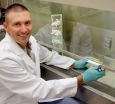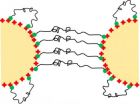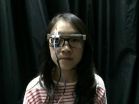(Press-News.org) Fairfax, Va., July 28, 2014—A two-step decision tree analysis, incorporating Donabedian's model, is a feasible process to evaluate and distill the many available quality standards, guidelines, recommendations and indicators in order to update national and international quality standards for radiation therapy, according to a study published in the July-August 2014 issue of Practical Radiation Oncology (PRO), the official clinical practice journal of the American Society for Radiation Oncology (ASTRO).
Guidelines, recommendations and indicators may be utilized to develop new "best practice" standards through a formal consensus process and evaluation of the evidence base. The appropriate requirements and criteria for redeveloped standards, however, are not as well defined. This study, "Quality standards in radiation medicine," was designed to identify and validate an appropriate approach to collate, catalogue and analyze existing quality standards. A two-step decision tree method allows for the organization of numerous different standards issued by a range of national and international organizations and identifies duplicate standards as well as gaps in the standards.
Quality-related documents were identified using Google Scholar and Discover and three selection criteria: 1) national or international; 2) contain statements or questions related to measuring quality in a broad sense in radiation medicine programs; and 3) written in English. Technical quality control standards were not included in this analysis. From this analysis, eight publicly available documents were used to identify 454 radiation therapy quality standards or groups of standards. Each of the five study authors completed two exercises to categorize the 454 identified standards to Donabedian's structure, process or outcome, and also to the target of the standard: patients, staff, equipment or clinical process, or organization, for a total of 12 primary categories.
In exercise one, the 454 standards were categorized using a two-step process. The first step was to categorize the standards according to the Donabedian model, which provides a framework for examining health services and evaluating quality of care using three categories: structure, process and outcome. This categorization resulted in groups of approximately 150 standards each, making an in-depth analysis difficult. To reduce the size of the groups, a second step was implemented to classify the 454 standards according to each standard's target group (patients, staff, equipment or clinical process, or organization). This two-step process resulted in 12 primary classifications with an average size of 40 standards. The resulting smaller group size helped in identifying duplicate standards and key quality measures. The evaluators' responses were examined for reliability using the Fleiss free marginal kappa. The agreement between the evaluators was fair (k from 0.21 to 0.40) or moderate (k from 0.41 to 0.60), meaning three or more reviewers assigned the same categories in both steps to 67 percent (304) of the 454 quality standards. In the Donabedian model step, three or more evaluators agreed on the classification for 93 percent (422) of the 454 standards.
A second exercise was conducted, to determine if greater consistency in categorizations could be achieved. The evaluators reassessed any standards that did not receive unanimous categorization (n=290) in the first exercise. The standards were again categorized using the Donabedian model. When the 290 reevaluations were combined with the 164 that received unanimous agreement in exercise one, the free marginal kappa improved to 0.71, which shows substantial agreement (k=0.61 to 0.80). In exercise two, 64 percent (290) were classified as structure, 26 percent (116) were classified for process, and 10 percent (45) were classified for outcome.
"This research provides a sound basis for refining the global approach to improving quality and safety in radiation therapy. Although there is no agreed upon 'best practice' to use as the basis for revising standards, the methodology used in our study may be helpful for organizations interested in a formal consensus process for revising documents," said Peter Dunscombe, PhD, of the University of Calgary in Calgary, Alberta, and co-author of the study. "The analysis has already influenced refinement of the Canadian Partnership for Quality Radiotherapy's Quality Assurance Guidance for Canadian Radiation Treatment Programs guideline document, supporting the CPQR's work in further enhancing the high standards of Canadian radiation therapy treatment."
INFORMATION:
For a copy of the study manuscript, contact ASTRO's Press Office at press@astro.org. For more information about PRO, visit http://www.practicalradonc.org.
ABOUT ASTRO
ASTRO is the premier radiation oncology society in the world, with more than 10,000 members who are physicians, nurses, biologists, physicists, radiation therapists, dosimetrists and other health care professionals that specialize in treating patients with radiation therapies. As the leading organization in radiation oncology, the Society is dedicated to improving patient care through professional education and training, support for clinical practice and health policy standards, advancement of science and research, and advocacy. ASTRO publishes two medical journals, International Journal of Radiation Oncology • Biology • Physics and Practical Radiation Oncology; developed and maintains an extensive patient website, http://www.rtanswers.org; and created the Radiation Oncology Institute, a non-profit foundation to support research and education efforts around the world that enhance and confirm the critical role of radiation therapy in improving cancer treatment. To learn more about ASTRO, visit http://www.astro.org. END
Two-step decision tree analysis helps inform updates of RT best practices, quality standards
2014-07-28
ELSE PRESS RELEASES FROM THIS DATE:
Researchers identify potential biomarker for AD
2014-07-28
(Boston)-- Researchers from Boston University School of Medicine (BUSM) report variants in a new gene, PLXNA4, which may increase the risk of developing Alzheimer's disease (AD). The discovery of this novel genetic association may lead to new drug treatment options that target PLXNA4 specifically. These findings appear in the Annals of Neurology.
AD is the most frequent age-related dementia affecting 5.4 million Americans including 13 percent of people age 65 and older, and more than 40 percent of people age 85 and older. Genetic factors account for much of the risk for ...
Researcher using next-generation sequencing to rapidly identify pathogens
2014-07-28
MANHATTAN, Kansas — He calls himself the bug hunter, but the target of his work consists of viruses that can only be found and identified with special methods and instruments. Benjamin Hause, an assistant research professor at the Kansas State Veterinary Diagnostic Laboratory at Kansas State University, recently published an article about one of his discoveries, porcine enterovirus G, which is an important find in the United States.
"We had isolated a virus in cells, but didn't know what it was," Hause said. "We used next-generation sequencing to identify it, and it turned ...
Preschoolers with special needs benefit from peers' strong language skills
2014-07-28
The guiding philosophy for educating children with disabilities has been to integrate them as much as possible into a normal classroom environment, with the hope that peers' skills will help bring them up to speed. A new study provides empirical evidence that peers really can have an impact on a child's language abilities, for better or worse.
While peers with strong language skills can help boost their classmates' abilities, being surrounded by peers with weak skills may hinder kids' language development.
The findings are published in Psychological Science, a journal ...
Unhealthy habits more than double risk of metabolic syndrome in childhood cancer survivors
2014-07-28
A St. Jude Children's Research Hospital study found that 73 percent of adult survivors of childhood cancer more than doubled their risk of developing metabolic syndrome and related health problems by failing to follow a heart-healthy lifestyle. The results appear in the current issue of the journal Cancer.
Almost 32 percent of the 1,598 adult survivors of childhood cancer in the study had metabolic syndrome, an umbrella term for health risk factors like high blood pressure, abdominal obesity, elevated triglyceride and other abnormalities that often occur together. The ...
Seeing is bead-lieving
2014-07-28
HOUSTON – (July 28, 2014) – Rice University researchers are using magnetic beads and DNA "springs" to create chains of varying flexibility that can be used as microscale models for polymer macromolecules.
The experiment is visual proof that "bead-spring" polymers, introduced as theory in the 1950s, can be made as stiff or as flexible as required and should be of interest to materials scientists who study the basic physics of polymers
The work led by Rice chemical and biomolecular engineer Sibani Lisa Biswal and graduate student Julie Byrom was published this month in ...
Mutations from Venus, mutations from Mars
2014-07-28
Some 15% of adults suffer from fertility problems, many of these due to genetic factors. This is something of a paradox: We might expect such genes, which reduce an individual's ability to reproduce, to disappear from the population. Research at the Weizmann Institute of Science that recently appeared in Nature Communications may now have solved this riddle. Not only can it explain the high rates of male fertility problems, it may open new avenues in understanding the causes of genetic diseases and their treatment.
Various theories explain the survival of harmful mutations: ...
Measuring the smallest magnets
2014-07-28
Imagine trying to measure a tennis ball that bounces wildly, every time to a distance a million times its own size. The bouncing obviously creates enormous "background noise" that interferes with the measurement. But if you attach the ball directly to a measuring device, so they bounce together, you can eliminate the noise problem.
As reported recently in Nature, physicists at the Weizmann Institute of Science used a similar trick to measure the interaction between the smallest possible magnets – two single electrons – after neutralizing magnetic noise that was a million ...
Social network research may boost prairie dog conservation efforts
2014-07-28
Researchers using statistical tools to map social connections in prairie dogs have uncovered relationships that escaped traditional observational techniques, shedding light on prairie dog communities that may help limit the spread of bubonic plague and guide future conservation efforts. The work was done by researchers from North Carolina State University and the National Evolutionary Synthesis Center (NESCent).
"Prairie dogs are increasingly rare and are subject to bubonic plague," says Dr. Jennifer Verdolin, lead author of a paper on the work and an animal behavior ...
Motivation explains disconnect between testing and real-life functioning for seniors
2014-07-28
A psychology researcher at North Carolina State University is proposing a new theory to explain why older adults show declining cognitive ability with age, but don't necessarily show declines in the workplace or daily life. One key appears to be how motivated older adults are to maintain focus on cognitive tasks.
"My research team and I wanted to explain the difference we see in cognitive performance in different settings," says Dr. Tom Hess, a professor of psychology at NC State and author of a paper describing the theory. "For example, laboratory tests almost universally ...
Wearable device for the early detection of common diabetes-related neurological condition
2014-07-28
WASHINGTON, July 28, 2014—A group of researchers in Taiwan has developed a new optical technology that may be able to detect an early complication of diabetes sooner, when it is more easily treated. If the device proves safe and effective in clinical trials, it may pave the way for the early detection and more effective treatment of this complication, called diabetic autonomic neuropathy, which is common among people with both Type 1 and Type 2 diabetes. The condition progressively affects the autonomic nerves controlling vital organs like the heart and gastrointestinal ...





